This is a series on the animist religions popularly known as Voodoo. Yesterday we discussed various West African forms and their notable tendency toward human sacrifice (and even cannibalism.) Today we are hopping the Atlantic to examine the thankfully less-homicidal, local Voodoo variants. (Tomorrow’s post is here.)
The trans-Atlantic slave trade created new religious communities by mixing up adherents from different parts of Africa and exposing them to new religions traditions–Protestantism in the US, Catholicism in Haiti and Latin America, and various Native religions.
The results are the forms of Voodoo you are probably familiar with, due to their frequent depictions in popular media, Halloween productions, and Louisiana tourist shops.
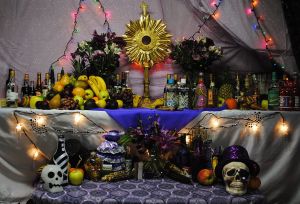
Voodoo makes for better fiction than reality, because in reality, Voodoo doesn’t work. (If Voodoo spells for power and money worked, Haiti would have conquered the planet and would be fabulously wealthy. Who needs nukes when you could just take out you enemies with Voodoo Dolls?) Voodoo’s popularity is based, instead, on appealing psychologically to its adherents.
Wikipedia claims that Voodoo Dolls aren’t actually for doing harm to others, “The Hoodoo doll is a form of gris-gris and an example of sympathetic magic. Contrary to popular belief, Hoodoo dolls are usually used to bless and have no power to curse,” but this is obvious bullshit. “Sympathetic magic” is the idea of influencing one thing by doing something similar to another thing. So, for example, if you have yellow fever and I want to cure you, I make a little effigy of you, paint it yellow, and then wash off the paint, hoping this will “wash off” the “yellow” from you. Sympathetic magic goes both ways; if I can cure you of yellow fever by washing the paint off the doll, I can give it to you by putting paint on the doll.
Consider, similarly, a claim that “Christian prayer is only supposed to praise god and request good luck or favors, not to invoke harm against others.” A Christian might say that, but in reality, prayers like, “Dear God, please give me victory in battle so that I may defeat the infidel,” or “Please give Johnny a cold so he won’t go to school and beat me up tomorrow,” are pretty common.
There is a general reluctance on Wikipedia to write things that reflect negatively on one’s subjects. For example, the page on West African Vodun doesn’t mention the word “sacrifice” at all, though one wonders how those fetish markets obtain their large piles of animal parts for magic rituals if animals are not killed in some way. The Wikipedia page on the DRC only references cannibalism only in the footnotes, and that’s just the title of an article from which a statistic on the size of the Pygmy population is based. The DRC human rights violations page also fails to mention cannibalism, focusing instead on their more mundane forms of horrifically common violence.
Or take this Scribol article on West African Voodoo, which admits that animal sacrifice is part of the religion, but also says, “These days, Voodoo remains flexible and capable of assimilating ideas from different traditions. At its core, however, it is monotheistic, believing in a single creator god who is assisted by spirits known as “Orishas”.” No, Voodoo is not monotheistic; having a supreme deity who rules over lesser deities is not the same thing as having only one deity. The article is accompanied by this photo:
Wow, look at that expert focusing of the camera on something other than the actual subject of the photo so that you can’t actually tell what’s going on, and the convenient black-and white to make the blood not stand out! If you’re going to defend animal sacrifice as “not cruel” or sinister, then don’t turn around and act like you’re afraid to actually show it to us. The article also reassures us that human sacrifice hasn’t been part of West African Voodoo for a hundred years, though recent news articles tell a different story.
Still, it’s true to say that human sacrifice isn’t exactly “mainstream” in the region and governments in most of the affected countries are trying to stomp it out.
Luckily for us, sacrifice takes a milder form in most of the New World forms of Voodoo, with many adherents content to just pour out libations for the thirsty dead or hand them the odd cigarette.
As always, exceptions exist.
Palo is a Cuban variety of Voodoo with large Congolese influences, which also invokes the magic of human remains. According to Wikipedia:
The main practice of Palo focuses upon the religious receptacle or altar known as a Nganga or Prenda. This is a consecrated vessel filled with sacred earth, sticks (palos), human remains, bones and other items. …
Palo has been linked to a rash of grave robbing in Venezuela. Residents report that many of the graves at Caracas‘ Cementerio General del Sur have been pried open to have their contents removed for use in Palo ceremonies.[2] In Newark, New Jersey, USA a Palo practitioner was found to have the remains of at least two dead bodies inside pots within the basement, along with items looted from one of the tombs.[3]
I looked up the Newark case (the original article is from the WSJ, but you have to join to read it, so I linked to a copy from another site):
Unlike its close relative, Santería, which stops at animal sacrifice, Palo believes that dead humans can also help connect believers to the spiritual realm. Paleros, says Mr. Canizares, believe that “the body has a right to be resurrected as a religious aid.” In the mythology of Palo, he says, “there is nothing wrong with asking a skeleton to work with you.” …
Skulls are the most prized form of human remains put into the nganga. Effort is made to leave at least three-quarters of the skull exposed, to enhance the visual effect for adherents at services. The nganga is the home to the spirit of a particular Palo god as well as the spirit of the dead person whose remains are “fed to the nganga.”Which brings us to grave robbing, or “so-called grave robbing,” as paleros like Mr. Canizares refer to it, objecting to Western judgmentalism. Palo doctrine insists that those who take remains from graves perform elaborate “permission rituals.” The dead are to be left alone if they say no. A palero can gauge skeletal interest by sprinkling liquor on a grave and listening for a rumbling sound–i.e., “yes.” Other permission rituals involve nailing an animal’s tongue to a tree so the spirit can speak through it.
Not all skeletons are created equal: The more evil or powerful a person was in life, and the more violent the death, the better. This makes criminals and corrupt politicians especially appealing, along with murder victims and suicides. The longer a person has been dead, the better, too. An infant’s full skeleton is also highly prized for its power.With its high concentration of Cuban immigrants, northern New Jersey has become a Palo hotbed. In 1999, Kearny, N.J., police charged a Palo priest and several followers with the theft of the remains of an infant dead for 83 years. Workers at the cemetery had found machetes in trees, and animal tongues.
From 1965 to 1973, there was another wave of immigration known as the Freedom Flights. In order to provide aid to recently arrived Cuban immigrants, the United States Congress passed the Cuban Adjustment Act in 1966. The Cuban Refugee Program provided more than $1.3 billion of direct financial assistance. They also were eligible for public assistance, Medicare, free English courses, scholarships, and low-interest college loans.[citation needed] …
Fidel Castro sent some 20,000 criminals directly from Cuban prisons, as well as mentally ill persons from Cuban mental institutions, with the alleged double purpose of cleaning up Cuban society and poisoning the USA. Those people were labeled “unadmissible” by the US government, and with time, through many negotiations, have been returned to Cuba.[citation needed]
…connections to a Palo conspiracy remained elusive until an informant led police to a religious-items store, or botanica, while a ritual was in progress in August of this year. Inside the pots were three skulls and body parts from five corpses. Police charged the store owner with burglary, theft and conspiracy. Just a month ago, Newark police raided the scruffy tenement at Central and Norfolk. Inside a basement worship room, 10-gallon Palo pots held at least two sets of human remains, including two skulls. … The other bones may belong to a juvenile. This, police say, raises the prospect of an unreported grave robbery or even a murder. The scene inside the worship room, says Newark Detective Donald Stabile, was ghastly. Animal parts were arranged on altars around the room. The basement “had an odor that you keep with you–like your first DOA.”
Let us be thankful that most Palo followers are content with grave robbing. Some, like serial killer Adolfo Constanzo, aren’t:
Constanzo was born in Miami, Florida to Delia Aurora Gonzalez, a Cuban immigrant mother in 1962. She gave birth to Adolfo at the age of 15 and eventually had three children of different fathers. She moved to San Juan, Puerto Rico after her first husband died and remarried there. Constanzo was baptized Catholic and served as an altar boy, but also accompanied his mother on trips to Haiti to learn about Voodoo.[1] … As a teenager, Constanzo became apprenticed to a local sorcerer and began to practice a religion called Palo Mayombe, which involves animal sacrifice. His mother remarried and his new stepfather was involved in the religion and drug dealing. Constanzo and his mother were arrested numerous times for minor crimes like theft, vandalism and shoplifting.
They sound like lovely people! I hope we keep our policy of indiscriminate Cuban migration just because we hate Castro!
As an adult, Constanzo moved to Mexico City and met the men who were to become his followers: Martin Quintana, Jorge Montes and Omar Orea. They began to run a profitable business casting spells to bring good luck, which involved expensive ritual sacrifices of chickens, goats, snakes, zebras and even lion cubs.[1] Many of his clients were rich drug dealers and hitmen who enjoyed the violence of Constanzo’s “magical” displays. He also attracted other rich members of Mexican society, including several high-ranking corrupt policemen who introduced him to the city’s powerful narcotics cartels.[1]
Constanzo started to raid graveyards for human bones to put in his nganga, or cauldron, but before long he would need live human sacrifices instead of old bones. More than 20 victims, whose mutilated bodies were found in and around Mexico City, are thought to have met their end this way.[1]
Constanzo began to believe that his magic spells, many of which he took from Palo Mayombe, were responsible for the success of the cartels and demanded to become a full business partner with one of the most powerful families he knew, the Calzadas. When his demand was rejected, seven family members disappeared. Their bodies turned up later with fingers, toes, ears, brains and even (in one case) the spine missing.[2]
Finally Constanzo murdered an American, at which point politicians in Texas managed to do what politicians in Mexico apparently didn’t feel like doing, and got the Mexican police to do their fucking jobs:
Police quickly discovered the cult and that Constanzo had been responsible for Kilroy’s death, after a ‘good’/superior brain for one of his ritual spells. Officers raided the ranch and discovered Constanzo’s cauldron, which contained various items such as a dead black cat and a human brain.[3] Fifteen mutilated corpses were dug up at the ranch, one of them Kilroy’s.[3] Officials said Kilroy was killed by Constanzo with a machete chop to the back of the neck when Kilroy tried to escape about 12 hours after being taken to the ranch.[4]
Costanzo committed suicide, but 14 of his associates were arrested and charged with murder, drug-running, etc.
I actually don’t object, abstractly, to the physical practice of animal sacrifice. Most sacrificed animals are eaten after wards. I eat animals; what does it matter if someone says a prayer over an animal before butchering and eating it?
I object to the spiritual notion that animal (and human) bodies contain magical powers or spirits that you can obtain by killing them. That is a road that leads to head-hunting, cannibalism, and murder.
One of the things I appreciate about Christianity and Judaism is that they have basically eliminated sacrifice. Judaism first did away with human sacrifice, symbolically in the story of Abraham, Isaac, and the ram, and then explicitly in the injunctions not to sacrifice your children to Moloch. This was no mere hypothetical; their neighbors regularly sacrificed children to Moloch.
Jews still conducted animal sacrifices until the fall of the Second Temple, after which there was nowhere to do the sacrifices, and so they stopped. Hypothetically they could resume if anyone ever gets around to rebuilding the temple, but this does not appear to be a priority, and I don’t think most Jews want to do animal sacrifices.
Christianity never had animal sacrifice of any kind, having begun with a replacement of all forms of sacrifice with deistic sacrifice in the form of Jesus’ death and resurrection. (As a result, some early Christian sects were vegetarian, due to the association between all forms of animal butchering and “sacrifice.”) The closest Christianity gets to sacrifice is the Catholic belief in the transubstantiation of the Eucharist, in which bread and wine are supposed to become, in some non-physical way, Jesus’ flesh and blood. Still, there is no threat of Catholics tracking down an actual Jesus and deciding to eat him.
But I’m off-topic. Grave robbing may be illegal in the US, but animal sacrifice isn’t; in 2009, for example, a Texas court ruled that Jose Merced, a Santeria priest (Cuban variety of Voodoo also common in PR,) was legally allowed to sacrifice animals in his home:
“Merced cannot perform the ceremonies dictated by his religion,” Judge Jennifer W. Elrod wrote. “This is a burden, and it is substantial. It is real and significant, having forced Merced to choose between living in Euless and practicing his religion.”
The court said Merced’s only available ceremonial space was in his house, due to the scarcity of Santeria temples in the United States. They also found that the Santeria priest discarded of the animal remains in a timely and sanitary manner.
The Dallas Observer has an interesting article on the case, and a ritual sacrifice reporters were allowed to watch:
As the sacrificial hour approaches, several priests (Santeros) are preparing the 40 assorted goats, roosters, hens, guinea hens, pigeons, quail, turtle and duck who grow noisy and nervous in their cages. Their lives will be taken in an exchange mandated by Olofi, Santería’s supreme god and source of all energy, to heal the broken body and spirit of Virginia Rosario-Nevarez and to initiate her into the Santería priesthood. …
Mounted against a wall in the back room shrine in Merced’s house are shelves containing clusters of small ceramic pots, ornately decorated and filled with shells, stones and other artifacts—the physical manifestations of the Orishas that reside in the room. To initiate Nevarez as a priestess, new godly manifestations of the old gods on Merced’s shelf must be born. To make this happen, animal blood will be spilled onto new pots, which the priestess will take home to begin her own shrine with her own newly manifested gods. …
Thea article then takes us through Merced’s childhood in Puerto Rico and introduction to Santeria. At the age of 12 he developed chronic stomach pain:
A medical doctor suggested exploratory surgery, but his mother wouldn’t hear of it. … he asked his mother to bring him to a woman his mother had been seeing for private spiritual readings. Even without him mentioning it, the woman told him about his intestinal pains and his nightmares. Hoping she could cure him, Merced began attending weekly séances at her home. …
The woman became his godmother in Santería, and she continued to treat him with herbal potions and spiritual readings. Over the next 18 months, he lost 60 pounds and had good months as well as bad.
I’m interpreting “lost 60 pounds” as “his stomach was so bad he couldn’t digest food anymore and was starving,” rather than “he became increasingly healthy and worked off excess fat,” but I’m not positive.
Finally, Merced says that the Orishas spoke through the woman and told her that the only way to make his pain disappear was to get initiated as a priest. Merced was ready, but the ceremony was expensive, $3,000, and he didn’t have enough money. For a year after graduating high school, Merced saved up …
Anyone else get the impression that someone is taking advantage of sick people?
He had helped with other initiations at his godmother’s house but was never allowed inside the shrine-room. “I saw the animals going in alive and coming out dead,” Merced recalls. But he had no idea why. … If you’re not crowned [a priest], you’re not supposed to know. So when I went in to my ceremony, I didn’t have a clue.” … As the animals were brought in, he was told to touch his head to the animal’s head and its hooves to other areas of his body. The animal was absorbing his negativity. He had to chew pieces of coconut, swallowing the juice but spitting the coconut meat into the animal’s ear.
… The pieces of coconut represented Merced’s message—his thoughts, feelings, needs—which were transferred to the goat for direct passage to Olofi. His physical contact with the animal was also symbolic of his commitment to God. As soon as the animal’s blood was spilled, Merced’s negativity, which had been absorbed by the goat, was released. The purified blood then spilled into the pots. (bold mine)
Shortly after the initiation, he says his stomach pains subsided. “I never, ever have felt again the same pain that I used to feel before,” he says.”
It’s a pity this sort of thing doesn’t seem to replicate under controlled, scientific conditions, because if you could really cure chronic conditions just by sacrificing a few goats, modern medicine would be revolutionized.
Getting back to the legal situation:
Laycock had successfully represented the Santería church before the Supreme Court in 1993 after the city of Hialeah, Florida, tried to ban the ritual killing of animals not for public consumption. The Hialeah City Council enacted the ban specifically targeting the Santería religion after it learned one of its churches had plans to locate within city limits. The high court saw this ordinance as being applied exclusively to Santería and held it an unconstitutional restriction on the free exercise of religion.
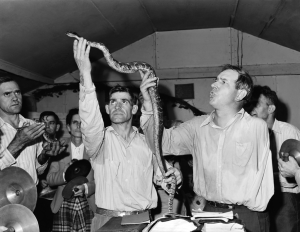
Laws specifically targeting snake-handling Christian churches have been on the books in pretty much every Southern state but West Virginia for decades, (WV believes in freedom of religion or something,) and the SCOTUS seems fine with that. (Actually, the court might decide in their favor if they bothered to bring a case.)
The American South has its own Voodoo traditions, with Catholic and Haitian influenced Voodoo down in Louisiana, and the more Baptist flavored Hoodoo everywhere else.
Haitian/Louisiana Voodoo probably come closest to the form of an organized religion, in large part because Voodoo has been able to operate above-ground in Haiti, where about half the people believe in it, including their erstwhile dictator, Papa Doc Duvalier:
Duvalier fostered his cult of personality and claimed he was the physical embodiment of the island nation. He also revived the traditions of Vodou, later using them to consolidate his power with his claim of being a Vodou priest, himself. In an effort to make himself even more imposing, Duvalier deliberately modeled his image on that of Baron Samedi, one of the loa, or spirits, of Haitian Vodou. He often donned sunglasses to hide his eyes and talked with the strong nasal tone associated with the loa. The regime’s propaganda stated that “Papa Doc was one with the [loa], Jesus Christ and God himself”.[11] The most celebrated image from the time shows a standing Jesus Christ with a hand on the shoulder of a seated Papa Doc, captioned, “I have chosen him”.[31] Duvalier declared himself an “immaterial being” as well as “the Haitian flag” soon after his first election.[32] In 1964, he published a catechism in which the Lord’s Prayer was reworded to pay tribute to Duvalier instead of God.[33][32]
Duvalier also held in his closet the head of former opponent Blucher Philogenes, who tried to overthrow him in 1963.[25]:132He believed another political enemy was able to change into a black dog at will and had the militia begin killing black dogs on sight in the capital.[34]
Clearly the kind of guy you want running your country!
Personally, the vibe I get off Papa Doc is less Loa of Death and more Steve Urkel:
But maybe you had to be there.
Sadly, I can’t find the picture of Jesus endorsing Papa Doc.
Wikipedia gives some insight into the practice of Haitian Voodoo, which appears to revolve around death, worship, and spirit possession:
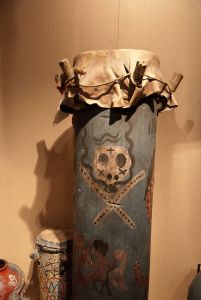
The practitioners of Vodou revere death, and believe it to be a great transition from one life to another, or to the afterlife. In some Vodou families, it is believed that a person’s spirit leaves the body, but is trapped in water, over mountains, in grottoes, or anywhere else a voice may call out and echo for a span of one full year and one day. … After the soul of the deceased leaves its resting place, it can occupy trees, and even become a hushed voice on the wind. …
As the songs are sung, participants believe that spirits come to visit the ceremony, by taking possession of individuals and speaking and acting through them. … In Haiti, these Vodou ceremonies, depending on the Priest or Priestess, may be more organized. But in the United States, many vodouists and clergy take it as a sort of non-serious party or “folly”. In a serious rite, each spirit is saluted and greeted by the initiates present and gives readings, advice, and cures to those who ask for help. Many hours later, as morning dawns, the last song is sung, the guests leave, and the exhausted hounsis, houngans, and mambos can go to sleep.
Vodou practitioners believe that if one follows all taboos imposed by their particular loa and is punctilious about all offerings and ceremonies, the loa will aid them. Vodou practitioners also believe that if someone ignores their loa it can result in sickness, the failure of crops, the death of relatives, and other misfortunes. [32] Animals are sometimes sacrificed in Haitian Vodou. A variety of animals are sacrificed, such as pigs, goats, chickens, and bulls. “The intent and emphasis of sacrifice is not upon the death of the animal, it is upon the transfusion of its life to the loa; for the understanding is that flesh and blood are of the essence of life and vigor, and these will restore the divine energy of the god.”
Hoodoo seems pretty mild, all things considered, involving more stories of witch doctors and sacrifice than actual witch doctors making actual sacrifices, and is less of a “religion” and more a collection of folk medicines and superstitions. Wikipedia explains:
The purpose of hoodoo was to allow African Americans access to supernatural forces to improve their lives. Hoodoo is purported to help people attain power or success (“luck”) in many areas of life including money, love, health, and employment. As in many other spiritual and medical folk practices, extensive use is made of herbs, minerals, parts of animals’ bodies, an individual’s possessions and bodily fluids, especially menstrual blood, urine, saliva, and semen.
Contact with ancestors or other spirits of the dead is an important practice within the conjure tradition, and the recitation of Psalms from the Bible is also considered spiritually influential in hoodoo. …
Hoodoo is linked to a popular tradition of Bottle Trees in the United States. According to gardener and glass bottle researcher Felder Rushing, the use of bottle trees came to the Old South from Africa with the slave trade. Bottle trees were an African tradition, passed down from early Arabian traders. They believed that the bottles trapped the evil spirits until the rising morning sun could destroy them.
*Googles “bottle tree”*

Hoodoo and Louisiana Voodoo are referenced frequently in American music:
Many blues musicians have referred to hoodoo in their songs. Popular examples include “Louisiana Hoodoo Blues” by Ma Rainey, “Hoodoo Lady Blues” by Arthur Crudup, and “Hoodoo Man Blues” by Junior Wells. The Bo Diddley song “Who Do You Love?” contains an extensive series of puns about a man hoodooing his lover. He also recorded an album titled Got My Own Bag of Tricks (1972), a reference to a mojo hand or trick bag. In Chuck Berry‘s song “Thirty Days” he threatens an ex-lover, telling her that he “…talked to the gypsy woman on the telephone […] she gonna send out a world wide hoodoo…”. Woody Guthrie wrote the lyrics for “Hoodoo Voodoo”, a song later performed by Wilco and Billy Bragg. Creedence Clearwater Revival made reference to it in their hit song “Born on the Bayou” with the lyrics, “And I can still hear my old hound dog barkin’, chasin’ down a hoodoo there….”
and folklore–God, Doctor Buzzad, and the Bolito Man is a good book if you’re interested in the subject, but since I don’t have my copy anymore, here’s a story I found on the internet:
The first Dr. Buzzard came to Beaufort on a slave ship. Almost as soon as he was given a cabin in which to live, his master learned of his magical powers. This Dr. Buzzard had so much influence over the other slaves that his master gave him a large measure of freedom to be used in the practice of witchcraft. When the slaves were allowed to pursue their ancestral customs and beliefs, they performed their tasks more cheerfully.
I have read elsewhere that the “first” Dr. Buzzard was a white guy, but after he died, the mantle was taken up by dozens of others, most of them black. I doubt anyone could prove it either way.
The people born in slavery and their descendents relied on those who “worked in root” for their medical needs. Roots were mixed with cemetery dirt, frog’s feet, hearts of owls, and crushed bones and used as charms.
…He wore purple eyeglasses, a custom which prevented others from seeing his eyes, and he seemed to be always chewing on a root. The root on which he chewed had magical power, according to Dr. Buzzard. He said if he went into a courtroom during the time a case was being tried, he could chew the root and affect the outcome of the case. He also used another procedure in affecting the result of trials. He concocted a powder by grinding together certain materials, and he sprinkled the powder on desks, tables, and chairs in the courtroom. After the powder had been scattered about the courtroom, Dr. Buzzard said the room had been “rooted” and the course of the trial in progress would change.
Dr. Buzzard’s routine also called for the use of black cat’s. He said there was no stronger force in the world than that of a bone from a black cat that had been boiled alive! The technique called for Dr. Buzzard to put a black cat in a kettle of boiling water, and when the hot water covered the cat, “ That cat would talk just like a man.
After the cat had been boiled, it was dropped into a sack (the water in which the cat had been boiled was poured into a container for future use, as it was considered to be powerful in the treatment of certain maladies) and taken to a creek. The cooked cat was then dumped into the creek. If the process of boiling the cat and dumping the remains into the creek had been done correctly, according to the unexplained techniques of voodoo, all the bones would float away from the bank of the creek or sink, except one bone. “That bone just floats right to me,” Dr. Buzzard said. That was the bone with the power. Anyone carrying that bone was safe from “the law and everything else.”
In Dr. Buzzard’s case, it was probably more important to be known as the kind of guy who would boil cats alive than to actually boil them alive–but you never know.
I thought perhaps the “Magical Negro” trope in movies had its origin in folks like Dr. Buzzard, but it appears that–O Brother, Where Art Thou? possibly excepted–the trend is a recent thing has nothing to do with Southern folklore. Besides, proper Hoodoo doctors are supposed to be a bit scary.
I see a certain similarity between the ecstatic dance and spirit possession of the Voodoo ceremonies; the ring shouts of American black churches; speaking in tongues, faith healing, and spirit possession in various Pentecostal or Charismatic churches; snake handling; etc. These groups are not all theologically linked, but they are all common in the South, where they may have influenced each other by proximity.
More likely, though, I suspect the impulse toward these forms of worship arose fairly independently, simply because they appeal to the people involved.
Part one (yesterday)
Part three (next).
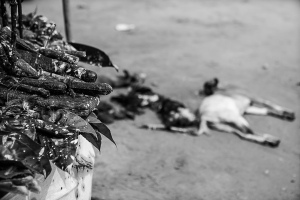
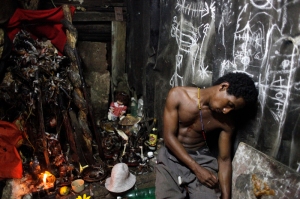
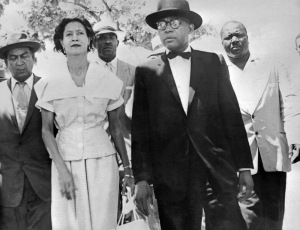

[…] Source: Evolutionist X […]
LikeLike
[…] here for: Part 2 and Part […]
LikeLike
[…] This is part three; here are Part 1 and Part 2. […]
LikeLike
[…] X (series): Animism, HeLa Cells, and Mystical Flesh (part 1), part 2, and part 3. Research-rich, picture-rich, and anecdote-rich exploration of the various flavors of […]
LikeLike
[…] 1, 2, and 3; Aboriginal Witchcraft, more Australia 1, 2, and 3; mysticism and voodoo 1, 2, and 3. In this post I will be drawing on summaries of these and similar […]
LikeLike